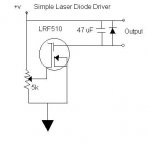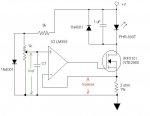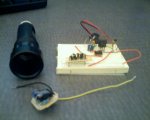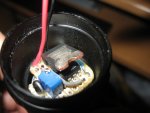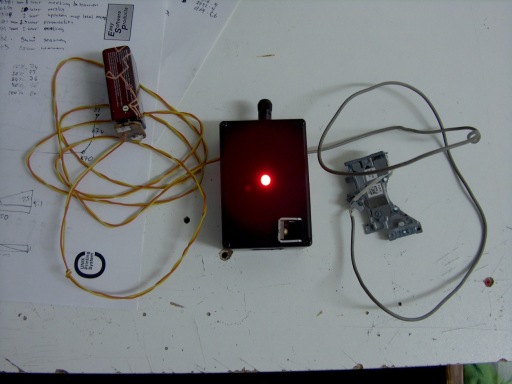- Joined
- Sep 8, 2008
- Messages
- 182
- Points
- 0
Hello All,
This is my first post. Apologies if this is already out there. Attached is the driver I built for my first 300mW burner. Instead of a regulator, I've used a IRF510 mosfet to control the current. The potentiometer adjusts current. As built it puts out around 400 mA when the gate voltage is 4.5 volts and the supply voltage is 9v. I'm still waiting on my host to adjust for a 6v supply. But since mosfets have very low resistance, the same circuit could be adjusted to power a 405nm diode even off a 6v supply!
The 4 components are cheap and can easily be fit into most hosts. (minus the mosfet's heatsink in some cases)
cheers,
kernelpanic
[edit] The Mosfet is an IRF510, not an LRF510, sorry for the typo. [/edit]
This is my first post. Apologies if this is already out there. Attached is the driver I built for my first 300mW burner. Instead of a regulator, I've used a IRF510 mosfet to control the current. The potentiometer adjusts current. As built it puts out around 400 mA when the gate voltage is 4.5 volts and the supply voltage is 9v. I'm still waiting on my host to adjust for a 6v supply. But since mosfets have very low resistance, the same circuit could be adjusted to power a 405nm diode even off a 6v supply!
The 4 components are cheap and can easily be fit into most hosts. (minus the mosfet's heatsink in some cases)
cheers,
kernelpanic
[edit] The Mosfet is an IRF510, not an LRF510, sorry for the typo. [/edit]


